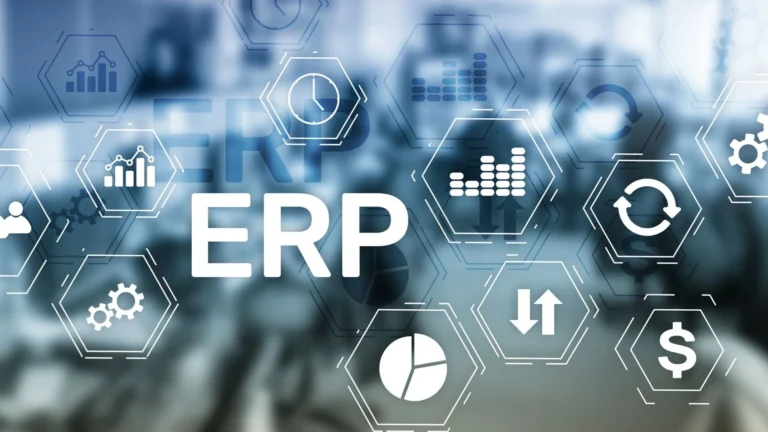From Excel to AI-integrated ERP: Automate Smarter in 2025

Introduction to AI-integrated ERP Systems
For years, Excel has been the go-to tool for managing business data in India. It’s familiar, flexible, and accessible. But as businesses grow, the cracks start to show—manual updates, formula errors, and limited collaboration. In today’s fast-paced world, relying solely on spreadsheets just doesn’t cut it.
Enter AI-integrated ERP systems. These modern tools combine automation, intelligence, and integration to streamline operations and improve decision-making. For Indian businesses, especially SMEs, the transition from Excel to ERP could be a game-changer in 2025.
Read more: Explore how AI is transforming financial services in India on CA Monk’s AI in Finance section.
Why Excel Is No Longer Enough
Excel is useful for basic calculations and small datasets. However, it lacks the scale and automation businesses now require.
Manual entry increases the risk of errors. There’s no built-in workflow automation. Collaboration is hard to manage across multiple versions. Security? Barely. As your team grows and your processes become more complex, Excel becomes a bottleneck rather than a solution.
Moreover, government regulations and market expectations are evolving. Businesses need real-time insights, audit trails, and secure data handling—areas where Excel falls short.
What ERP Systems Offer Over Excel
ERP (Enterprise Resource Planning) systems centralize your operations. Think of them as a digital nervous system connecting finance, inventory, HR, and sales.
In contrast to Excel, ERP software:
Updates in real time across departments
Automates workflows like invoicing and payroll
Tracks inventory and orders with accuracy
Offers dashboards for instant business insights
Additionally, cloud-based ERP solutions improve accessibility and reduce IT overhead. Employees can work from anywhere with a secure login, without relying on fragmented spreadsheets.
The Role of AI in ERP Automation
AI in ERP goes beyond automation. It adds intelligence to your operations:
Reduces manual data entry by recognizing patterns
Predicts trends using historical and real-time data
Improves operational speed with machine learning models
Alerts teams to anomalies or unusual transactions
Supports decision-making with AI-generated insights
For example, an AI-powered ERP can forecast stock needs during festival seasons based on past sales—no spreadsheet formulas required.
How APIs Make ERP Even Smarter
APIs (Application Programming Interfaces) act like digital messengers between systems. Instead of working in isolation, your ERP can connect with CRM tools, eCommerce platforms, and banking software.
In simple terms, APIs allow your ERP system to “talk” to other applications. For example, when a customer places an online order, your ERP updates inventory, schedules shipping, and records payment—all automatically.
This seamless ERP API integration ensures that your data flows across tools, reducing manual work and errors.
Real-Life Example: Excel to ERP Transition
Let’s look at a mid-sized electronics distributor in Mumbai.
Until 2022, the company managed finances and inventory using Excel. Frequent errors delayed shipments and caused mismatched stock records. As business grew, customer complaints increased.
In 2023, they transitioned to an AI-integrated ERP with built-in API connectors. Within six months:
Data accuracy improved by 80%
Monthly reporting time dropped from 3 days to 4 hours
Customer satisfaction scores rose significantly
The company also integrated its ERP with a logistics platform using APIs, eliminating manual dispatch tracking.
Steps to Shift from Excel to AI ERP
Making the switch doesn’t happen overnight. Follow these practical steps:
Audit current processes
Identify gaps, duplication, and areas Excel fails to support.Choose ERP with API + AI features
Look for platforms designed for Indian businesses with local compliance support.Train your team
Ensure staff understand how to use the system efficiently.Go live and monitor
Start with a soft launch, gather feedback, and refine workflows.
Conclusion
Looking ahead, ERP systems in India are moving beyond automation toward intelligent orchestration.
As a result, more vendors are embedding machine learning models that analyze business health in real time. Mobile-first ERP access and voice-based commands are also on the rise.
Moreover, government initiatives like “Digital India” are pushing more firms toward formal, integrated systems. With scalable AI and smart APIs, ERP platforms are becoming affordable even for small businesses.
Switching from Excel to an AI-integrated ERP system is no longer optional—it’s essential for scaling and staying competitive. Indian businesses that modernize their systems in 2025 will not only save time and costs but will also unlock smarter, data-driven growth.